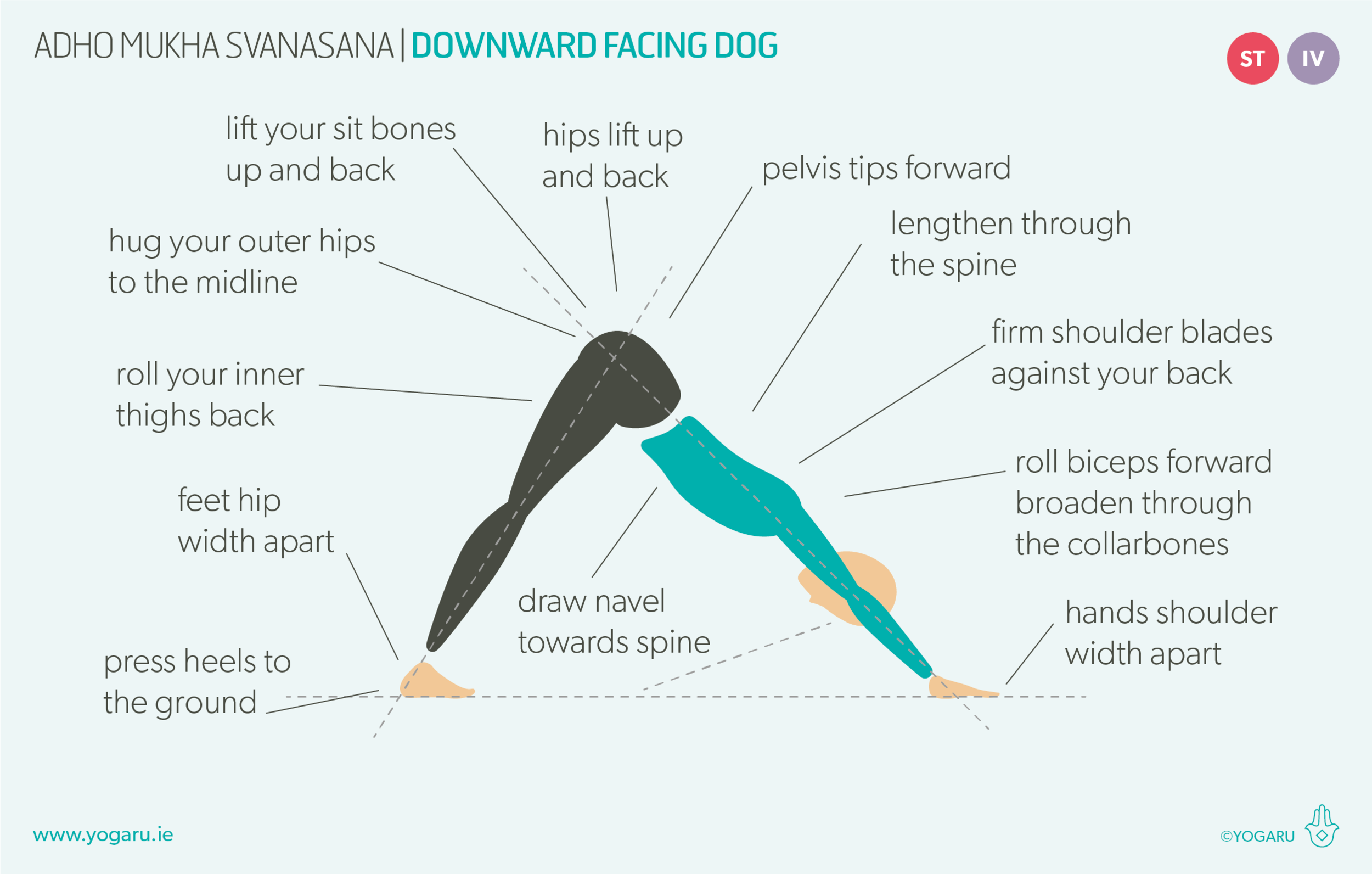MORE THAN MEETS THE EYE
We spend a lot of time hanging out in Adho Mukha Svanasana/Downward Facing Dog. We flow through it in our Surya Namaskara/Sun Salutations return to it when moving from one asana to another and take a few breaths in it as a recovery asana. It is a complex pose that requires both strength in the arms and legs and flexibility of your calves, hamstrings, spine and shoulders.
Adho Mukha Svanasana/Downward Facing Dog, can expose tightness in the back body. Often you will see yogis with a flattened lumbar spine (lower back) – where tight hamstring have pulled the pelvis back, and/or over rounded thoracic spine (upper back) – where tight shoulders are contracting the front of the chest.
THE BENEFITS OF DOWNWARD DOG
When attention is taken in Adho Mukha Svanasana/Downward Facing Dog, it can be a lovely asana to neutralise the spine, stretch the entire back body and take an inversion. An inversion is any asana where the heart is above the head, and Downward Dog ticks that box in a lovely gentle way.
EXPLORING DOWNWARD DOG IN YOUR PRACTICE
For your first Adho Mukha Svanasana/Downward Facing Dog keep you knees deeply bent and press strongly through the balls of your feet. This will give a bit of slack in tight calves and hamstrings, and allow you to work on tipping the pelvis forward and reaching your sit bones up. As you start to feel the muscles warm up, keeping your heel lifted, slowly straighten your legs. Working on keeping your sit bones pointing up and keeping the integrity of the lovely natural curve of your spine. To give a bit of space for tight shoulders try placing bricks under your hands and start to press your heels towards the ground. Blocks (the flatter version of bricks) can also be used to give you a surface to resist against and press your heels into – further stretching the backs of the legs.
ALIGNMENT CUES
Try the above sequence and take a bit of time to explore and develop your Adho Mukha Svanasana/Downward Facing Dog. – from your first one at the start of your sequence to your last one as the body opens up and releases areas of tension.
The following are some alignment cues that you might hear in class. Print them out, along with the sequence, and play around with what makes sense to you:
Hands shoulder width apart, feet hip width apart, press into all five knuckles of your hands and lightly though the pads of your fingers, fingers spread.
Roll your biceps forward, broaden the collarbones, back of the neck long, firm your shoulder blades against your back, head in line with your ears.
Pelvis tips forward, lift your sit bones up, stretch your heels towards the ground, draw your hips up and back.
Top of the thighs pressing back, roll your inner thighs back. Hug your outer hips to the midline, gaze to the ground under your pelvis.
Draw your navel towards your spine to support the internal organs.
Look for symmetry of the whole body between right and left side joining at the midline.
To save the images for personal use click and hold down the image until the ‘save image’ option appears; on Mac hold down ‘control’ and click the image to get the option box; on PC right click on the image to get the option box. Scroll down in the ‘option box’ and click ‘save image’.
Ruth Delahunty Yogaru





